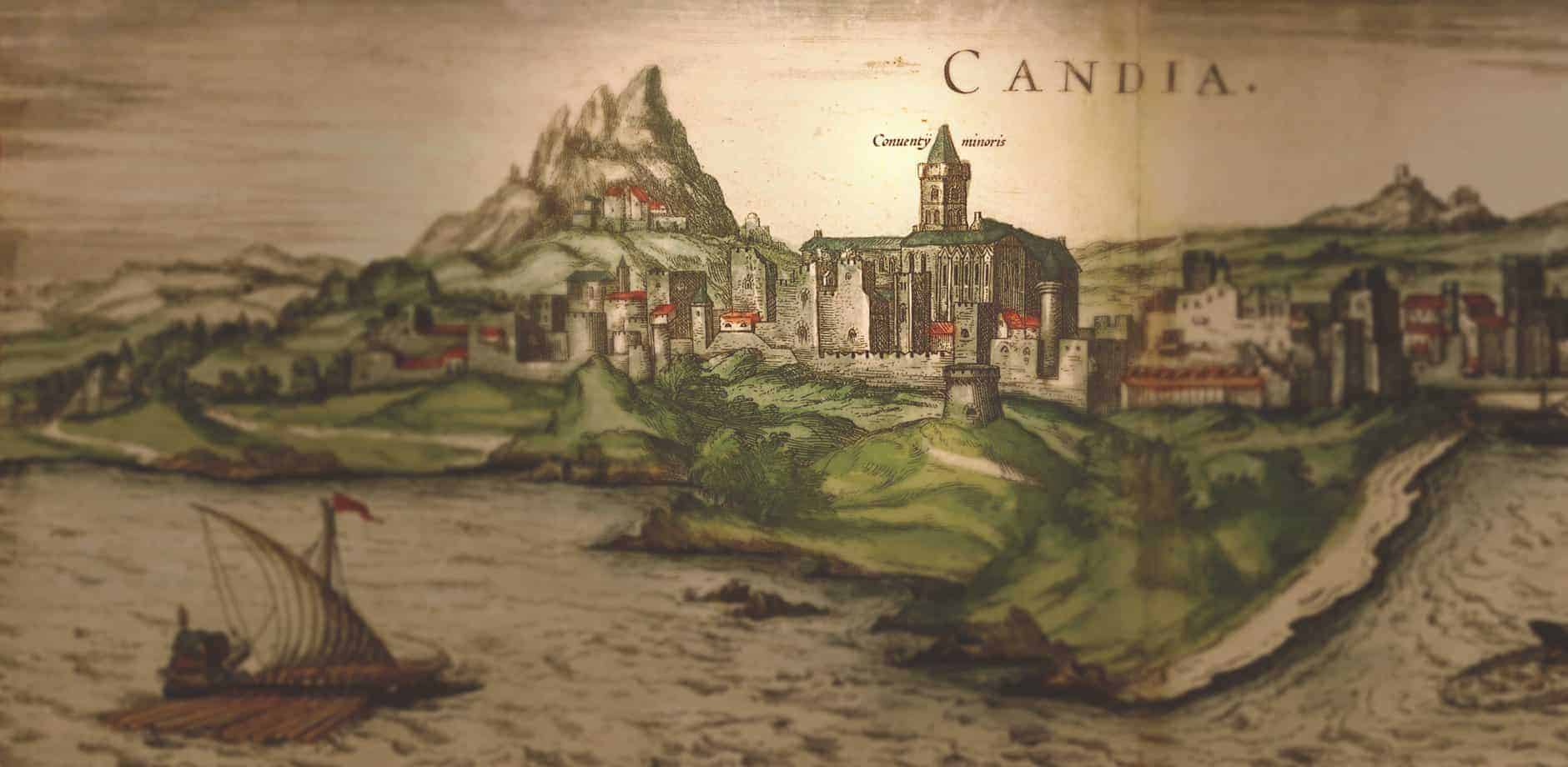Venice In The East: April 27-29, 2018
Program Notes by Alexander Lingas
From its emergence as a significant political entity in the sixth century under the rule of the Eastern Roman (“Byzantine”) Empire to the dissolution of the Republic by Napoleon in 1797, the city of Venice remained closely tied to the Greek East. Following the diversion of the Fourth Crusade to sack Constantinople in the year 1204, Venice not only seized for itself priceless treasures that to this day adorn their Byzantine-style church of San Marco, but also began to acquire its own empire of colonies in the Eastern Mediterranean. The size of this empire waxed and waned according to the fortunes of Venice and its political and economic competitors, which included at various times such other western powers as the Genoese and the French, as well the Byzantines and, especially from the fourteenth century onwards, the Ottoman Turks.
For centuries the most prominent and prosperous Greek-speaking colony of Venice was Crete, which it acquired in 1204. During the two centuries prior to its conquest by the Ottomans in 1669, Crete developed a flourishing Greco-Italian Renaissance culture. Meanwhile, in 1489 control of Cyprus passed from the French Lusignan dynasty to the Venetian Republic, which held it until its capture by the Turks in 1571. After the fall of Crete, Venice’s only Greek colonies were the Ionian Islands. The arrival of Cretan refugees bolstered cultural life of the larger islands of Corfu, Zante, Lefkada, and Cephalonia, which to this day retain Italianate linguistic, cultural and musical traditions. Meanwhile, Venice itself came to host a flourishing Greek minority that had gained a measure of cultural and religious autonomy in the sixteenth century with the building of the church of San Giorgio dei Greci.
The split that had occurred between the Roman Catholic and Eastern Orthodox Churches at the beginning of the second Christian millennium caused varying amounts of friction through the centuries between Venetian rulers and Greek subjects. Further confusion arose with the attempt to reunify the churches at the Council of Ferrara-Florence (1438–39), in the wake of which an Orthodox Divine Liturgy was celebrated in San Marco and Metropolitan Bessarion of Nicea, a prominent Byzantine churchman and intellectual whose books served as the original core of the Venetian Biblioteca Marciana, became a Cardinal of the Roman Church. Although the Orthodox chafed at strictures imposed upon them – in Crete, for example, they were allowed to retain their own lower clergy even as the consecration of local Orthodox bishops was forbidden –the general trend over time was toward greater religious toleration.
This program presents music from Venice and its Greek colonies that in various ways testifies to the sharing of religious traditions. It begins with excerpts from the Greek and Latin ceremonies of the Easter Triduum that display both parallel developments in liturgical piety and the sharing of musical and ritual elements. Both Venetians and Cretans marked the Passion and Deposition from the Cross of Christ with thematically similar rituals involving the use of simple forms of polyphony. Likewise, they possessed similar ceremonies for the opening of their churches on Easter Day and the Paschal greeting “Christ has risen!” (Surrexit Christus/!Χριστὸς ἀνέστη!). Both traditions are incorporated into the polyphonic setting of the Easter Troparion “Christ has risen” from the Codex Faenza 117, which follows the Cretan melody for this Greek hymn with the Latin response “Deo gratias”.
This concert continues with other music illustrating points of musical and ritual interchange between the Greek and Latin traditions under Venetian rule. The setting of the Latin recension of the hymn Gloria in excelsis to Byzantine chant is the work two Greek musicians: Manuel Gazes the Lampadarios and Ioannis Plousiadenos (ca. 1429–1500). Gazes evidently moved to Crete from Constantinople during the first half of the fifteenth century, where he taught the composer and scribe Angelos Gregoriou, who as a monk had also visited Mount Athos. Another Constantinopolitan composer who found refuge in Crete during the same period was Ioannis Laskaris, whose career on the island as a teacher and agitator for the rights of his native church is well documented in the archives of Venice.
Plousiadenos was a priest, music theorist, scribe, and composer who lived in Venice for significant portions of his life and died as a Roman Catholic bishop ministering to his religiously mixed Christian flock during a Turkish siege of the Venetian outpost of Methone in the Peloponnesus. During his years in Italy, Plousiadenos became a protégé of Cardinal Bessarion, who commissioned the hymn in fifteen-syllable verse to the Virgin Mary that concludes this program. This piece is known to survive only in Mt Athos Koutloumousiou 448, a manuscript copied in the late sixteenth or early seventeenth century by the Cretan composer Benedict Episkopopoulos. Music of this later period is represented by a setting of the Greek Orthodox text of the Creed – that is, without the Latin addition of the phrase “filioque” —by the “New Teachers” of Crete recorded by Theodore Rhodakinos in MS Sinai Gr. 1552, and the music of Hieronymos Tragodistes of Cyprus, a scribe and student of the Venetian theorist Gioseffo Zarlino.
SEATTLE
Fri 27 Apr, 8:00pm
St. James Cathedral
TICKETS
Add to Calendar
PORTLAND
Sat 28 Apr, 8:00pm
St. Mary’s Cathedral
TICKETS
Add to Calendar
Lake Oswego
Sun 29 Apr, 2:00pm
Our Lady of the Lake Parish, Lake Oswego
TICKETS
Add to Calendar


You must be logged in to post a comment.